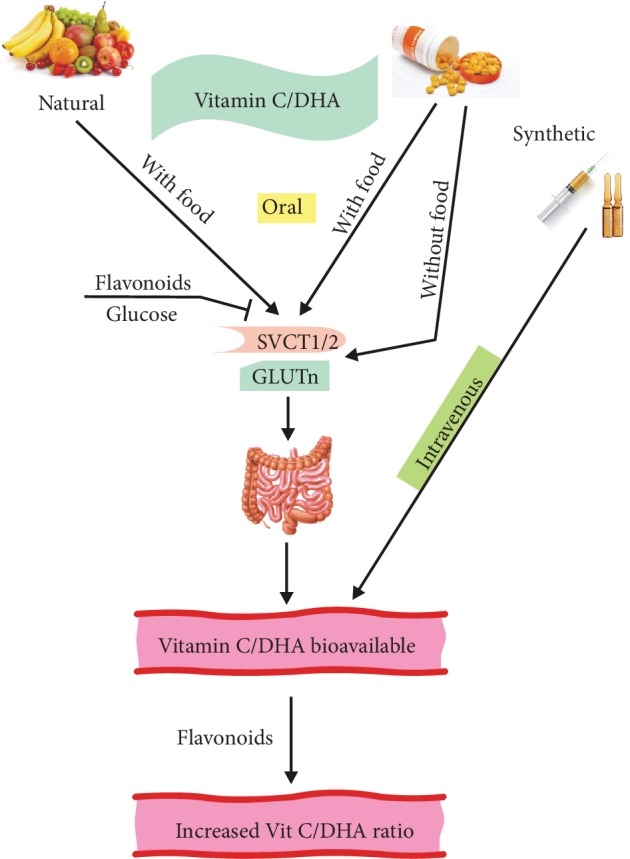Figure 2.

Absorption and bioavailability of natural and synthetic vitamin C. Vitamin C that is partly oxidized to dehydroascorbate (DHA) in an oxygen environment is transported by two sodium-dependent transporters SVCT1 and SVCT2, while DHA is taken up by the glucose transporter GLUTn, where n is 1-3 or 8. Vitamin C/DHA can be taken as either natural or synthetic ascorbic acid, and the latter can be given orally (with or without food) or intravenously. The final concentration of vitamin C in circulation depends not only on the route of ingestion but also on its excretion (not presented here) and the action of other dietary compounds, including glucose and flavonoids. Flavonoids can block the absorption of vitamin C, but they can also reduce some oxidants leading to an increase in the vitamin C/DHA ratio.
